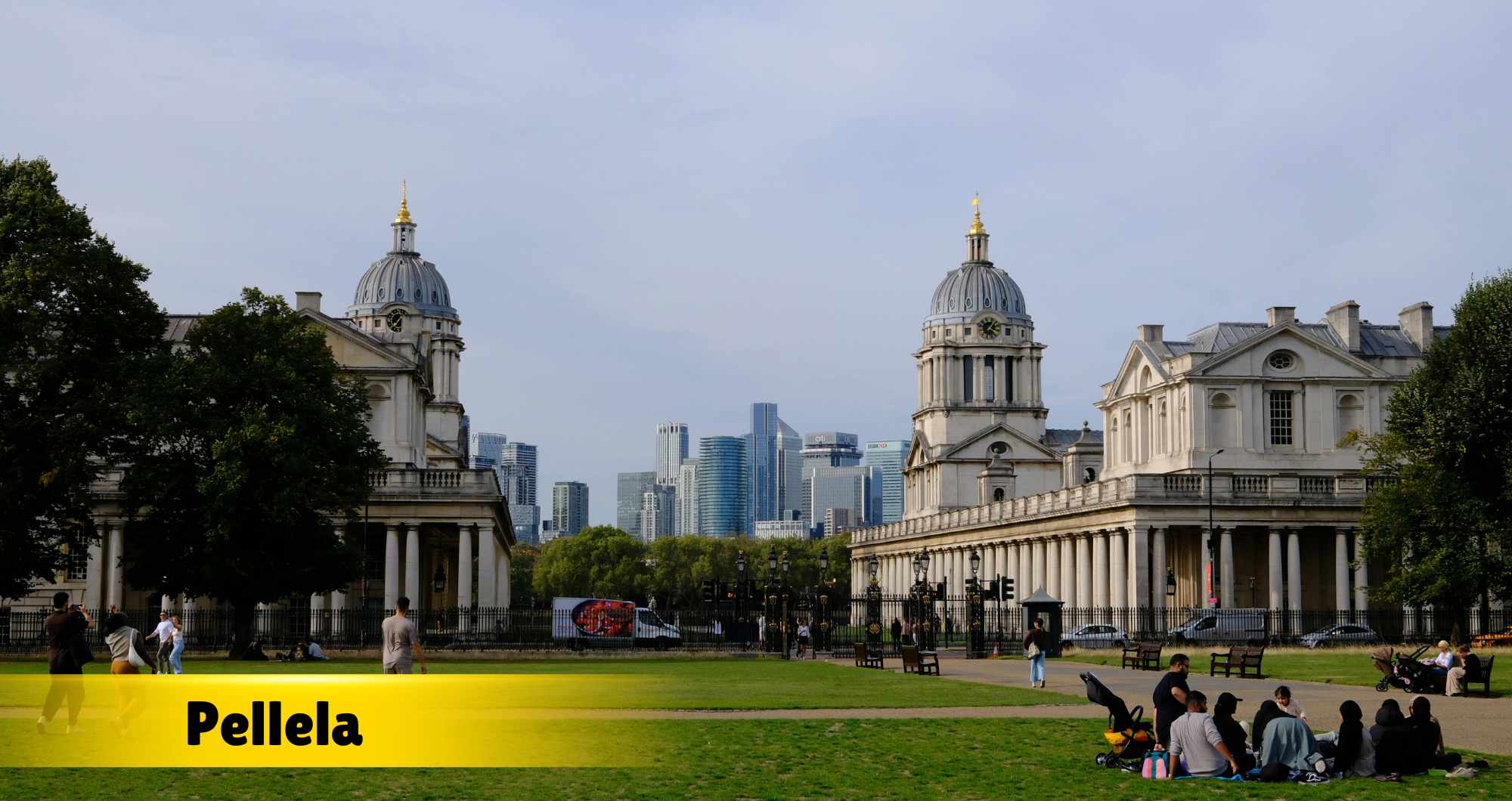Pellela is more than just a word; it’s a rich tapestry woven into the fabric of history, culture, and modern society.
This intriguing term carries with it layers of meaning that span across various regions and traditions. As we delve deeper into Pellela, you’ll discover its historical roots, cultural significance, and how it shapes local practices today.
From ancient customs to contemporary expressions in art and media, Pellela continues to influence lives around the globe.
So what exactly does Pellela encompass? Let’s embark on this journey together as we explore its fascinating dimensions—ready to uncover why Pellela remains relevant in our ever-evolving world?
What Is Pellela? Exploring the Meaning
Pellela is a term that holds diverse meanings depending on the cultural context in which it is used. At its core, Pellela often refers to a traditional practice or object with significant historical and cultural value.
This multifaceted word can represent rituals, art forms, or even community gatherings.
In some regions, Pellela signifies a specific type of craft or handmade item crafted by skilled artisans.
These creations not only showcase intricate craftsmanship but also reflect local traditions and stories passed down through generations. Each piece tells a unique story tied to its origin.
The meaning of Pellela also extends to social customs where communities come together for celebrations or commemorations.
Here, it serves as a unifying element that strengthens bonds among participants while honoring shared heritage.
Linguistically, the word may have variations across different dialects and languages. This linguistic diversity adds another layer of richness to what Pellela represents within various cultures around the world.
Moreover, Pellela can embody philosophical concepts related to identity and belonging. For many people, engaging with Pellela fosters a sense of pride in their roots and encourages intergenerational connections.
As we explore further into this topic, you’ll see how these meanings are intricately linked to broader themes like resilience and continuity in human culture—elements that make Pellela an enduring symbol worth examining deeper.
Historical Background of Pellela
Pellela has a rich and diverse history that dates back centuries. Its roots can be traced to various indigenous cultures that first inhabited the regions where Pellela traditions began. These early communities utilized Pellela as a means of expression through art, dance, and storytelling.
As societies evolved, the practice of Pellela transformed alongside them. It became interwoven with local customs and beliefs, adapting to reflect changing social dynamics.
This adaptability has allowed Pellela to thrive in different environments across the globe.
The spread of trade routes further facilitated the exchange of ideas related to Pellela between different civilizations.
As merchants traveled from one region to another, they brought along their interpretations of this cultural phenomenon. This led to unique regional variations while maintaining an underlying connection among all forms of Pellela.
Colonial influences also played a significant role in shaping its historical context.
Many traditional practices were suppressed or altered under colonial rule; however, resilience emerged within communities seeking to preserve their heritage through Pellala expressions.
In modern times, scholars have begun documenting these historical narratives more rigorously than ever before.
Their work highlights how past generations used Pellela not only for artistic endeavors but also as vehicles for communication during socio-political upheavals.
Today’s understanding of Pellela is deeply informed by this layered history—a testament to its enduring power and relevance throughout time while continuing influencing contemporary culture significantly.
Cultural Significance of Pellela Across Regions
Pellela holds a unique place in the cultural tapestry of various regions. Its significance often varies, reflecting local traditions and values. In many communities, pellela is celebrated with festivals that honor ancestral customs.
In Africa, for instance, pellela symbolizes unity and resilience. It is often associated with communal gatherings where people share stories and experiences linked to their heritage.
These events strengthen social bonds while also educating younger generations about their roots.
Moving to Asia, particularly in South Asian cultures, pellela takes on a spiritual dimension. Here it’s intertwined with rituals and ceremonies aimed at fostering harmony among families.
Such practices highlight the importance of collective identity within diverse ethnic groups.
Latin American countries approach pellela through vibrant expressions like music and dance during festivities.
The lively rhythms reflect joy but also convey deeper meanings related to history and struggle. This connection allows communities to celebrate their past while looking towards the future.
In Europe, especially in Mediterranean nations, pellela embodies artistic expression found in traditional crafts or culinary arts.
Artisans pass down skills linked to this concept through generations—ensuring its relevance persists amidst modernization.
Across all these regions, what remains constant is the role of pellela as a bridge between past traditions and contemporary life. This adaptability speaks volumes about its resonance within various societies today.
Pellela in Modern Society and Its Relevance
In today’s fast-paced world, the concept of pellela resonates deeply with various communities. Its significance extends beyond tradition and into modern life. This relevance is particularly evident in how people seek connection to their roots amidst globalization.
Pellela has found its place in contemporary discussions about identity. Many individuals embrace this cultural element as a way to assert their heritage. It fosters pride and awareness among younger generations who often feel detached from historical narratives.
Social media plays a crucial role in the propagation of pellela today. Platforms like Instagram and TikTok showcase traditions linked to pellela. Allowing users to share experiences and generate interest worldwide. These platforms have become spaces for cultural exchange that celebrate diversity.
Moreover, businesses are recognizing the value of pellela as they incorporate traditional elements into modern products or experiences.
From fashion lines inspired by traditional designs to culinary ventures embracing ancestral recipes, these initiatives resonate with consumers seeking authenticity.
Educational institutions also increasingly emphasize pelella’s importance through workshops, lectures, and community events.
By integrating it into curricula or hosting public exhibitions, they help preserve these vital traditions while making them accessible for future generations.
The influence of pellela stretches across art forms too—from music infused with traditional melodies to visual arts exploring themes rooted in cultural history.
Artists draw inspiration from these rich backgrounds, creating works that reflect both past influences and present realities.
How Pellela Influences Local Traditions and Practices
Pellela holds a unique place in various local traditions, often serving as a symbol of community identity.
This influence can be observed in festivals where Pellela is prominently featured, showcasing its importance to the collective cultural narrative.
In many regions, artisans incorporate Pellela into traditional crafts and practices. For example, local workshops may focus on creating intricate items that reflect the essence of Pellela.
These creations not only celebrate heritage but also provide economic opportunities for communities.
Rituals surrounding Pellela vary significantly across different cultures. Some communities perform dances or songs dedicated to it during significant life events such as weddings or harvest celebrations.
These performances help reinforce social bonds and connect individuals with their ancestry.
Education plays a crucial role in passing down the significance of Pellela among younger generations.
Schools often organize programs that teach children about its history and meaning through storytelling or hands-on projects related to local customs.
Moreover, culinary traditions frequently highlight the concept of Pellela through specific recipes passed down through families.
Dishes inspired by this cultural element are prepared during festive occasions, further embedding it into daily life and communal gatherings.
The presence of Pellela fosters a sense of pride within communities. It encourages people to engage with their roots actively while exploring modern interpretations that keep these traditions alive in contemporary contexts.
Common Misconceptions About Pellela
Pellela often brings to mind various misunderstandings. One prevalent misconception is that Pellela refers solely to a specific cultural tradition or event.
In reality, it encompasses a broad spectrum of meanings across different regions and communities.
Some people believe Pellela is only related to specific rituals or festivals. While these celebrations are significant, the term also represents everyday practices, beliefs, and expressions intrinsic to local identities. The richness of Pellela lies in its versatility.
Another common myth is that Pellela is static in nature. Many assume it has not evolved over time, but this couldn’t be further from the truth.
Like any cultural phenomenon, Pellela adapts and changes with society’s evolving values and norms.
Additionally, some think that Pellela is exclusive to one ethnic group or community. However, it transcends boundaries and can be found interwoven into various cultures worldwide.
Each adding unique flavors while preserving its essence.
People sometimes overlook the role of modern technology in shaping perceptions of Pellela too.
Social media platforms have created new avenues for sharing experiences related to Pellela but may lead to oversimplified portrayals as well.
There’s an assumption that embracing Pellela means rejecting contemporary influences or ideas. On the contrary! Many individuals successfully integrate traditional elements with modern life without losing their authenticity or connection to their roots.
Pellela’s Role in Contemporary Art and Media
Pellela has become an intriguing subject in contemporary art and media. Artists are increasingly drawing inspiration from its rich history and cultural significance.
This fascination often results in innovative works that challenge traditional norms.
In visual arts, Pellela is depicted through various mediums, including paintings, sculptures, and installations.
Artists use colors and textures associated with Pellela to evoke emotions tied to the cultural heritage it represents. This approach not only preserves tradition but also reinterprets it for modern audiences.
Film and television have also embraced Pellela as a theme or motif. Documentaries exploring its historical roots provide insight into how this concept resonates across different cultures today.
Fictional narratives incorporate elements of Pellela to deepen character development or enrich storytelling.
Social media platforms serve as vital spaces for discussions around Pellela. Creators share their interpretations through videos, artwork, and essays, sparking conversations about its relevance in today’s world.
These online dialogues help raise awareness among younger generations who may be less familiar with traditional forms of expression.
Moreover, virtual exhibitions showcasing pieces inspired by Pellela allow global audiences to engage with art that honors this concept while offering a fresh perspective on age-old traditions.
The accessibility of digital media means more people can experience the beauty of Pellela without geographical limitations.
Institutions like galleries and museums are beginning to curate exhibits centered on themes related to Pellela. These events encourage critical thinking about identity and culture while making room for diverse voices within the artistic community.
Future Prospects for Pellela in Global Culture
The future prospects for pellela in global culture appear promising, as interest in diverse cultural practices continues to grow.
As societies become more interconnected through technology and travel, the appreciation for unique traditions like pellela is likely to increase.
This provides an opportunity for communities that practice pellela to share their customs on broader platforms.
With the rise of social media and digital storytelling, younger generations are finding innovative ways to showcase their heritage.
Pellela can thrive in these spaces, helping preserve its history while also adapting it for modern audiences. Online workshops, virtual festivals, and collaborative art projects can help keep the essence of pellela alive.
Moreover, educational institutions are beginning to recognize the importance of such cultural practices. By incorporating pelella into curricula around world cultures or anthropology studies, students will gain a deeper appreciation of its significance.
Local artisans may also find renewed inspiration from pellela’s themes and motifs when creating contemporary works. This fusion could lead to fresh expressions that resonate with both traditionalists and modernists alike.
As globalization continues apace, there’s potential for collaboration between different cultures influenced by pellela’s core values—community bonding, respect for nature, and artistic expression. The adaptability seen in how communities celebrate this tradition bodes well for its continuation across generations.
As people seek authenticity amid rapid change in today’s world, forms like pellela stand out as vital threads connecting us all across time and space.




